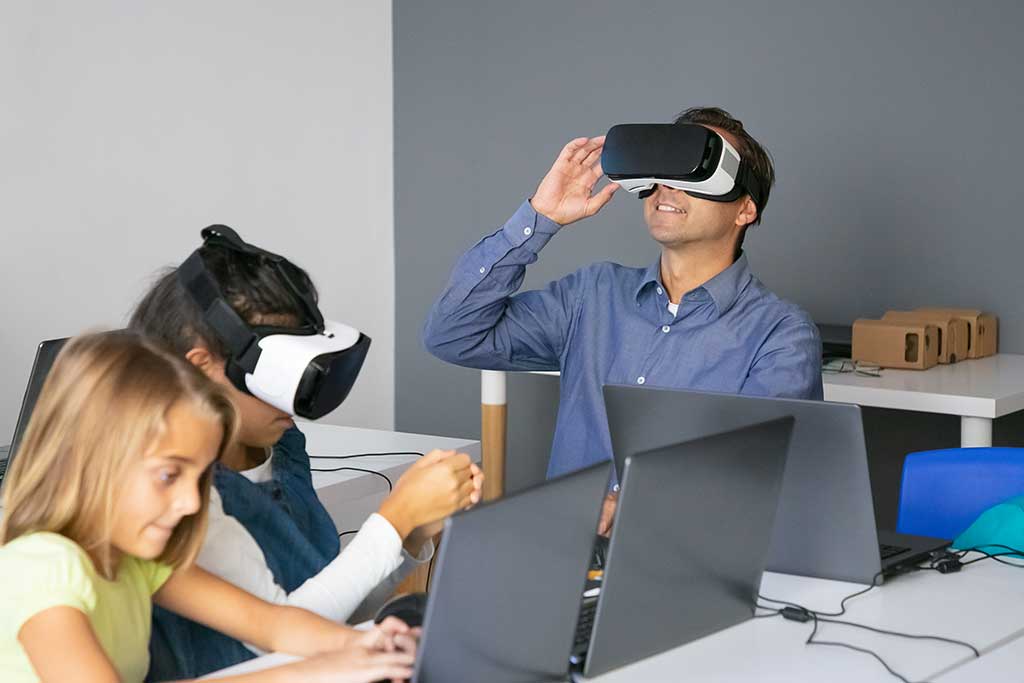Now Reading: The Rise of the AI Co-pilot: From Code Completion to Full Creative Partner
-
01
The Rise of the AI Co-pilot: From Code Completion to Full Creative Partner
The Rise of the AI Co-pilot: From Code Completion to Full Creative Partner

AI Co-pilots are no longer just fancy autocomplete tools. They are evolving into creative partners, helping developers write code, designers create art, and professionals draft documents. This article explores how this technology is changing our work, its pros and cons, and how Indian developers can ride this wave.
Remember the simple, helpful red squiggly line under a misspelt word in your document? It was a basic assistant, pointing out a mistake. Then came predictive text on our phones, suggesting the next word. Now, imagine that helper evolving—not just fixing typos, but helping you write a poem, not just suggesting a word, but helping you write a complex business report. It can help an architect design a building, a musician compose a tune, or a software engineer build an entire application.
This is no longer science fiction. Welcome to the era of the AI Co-pilot.
In India, from tech hubs like Bengaluru and Hyderabad to growing startups in Pune and Gurugram, this technology is creating a quiet revolution. It’s changing the very definition of what it means to create with a computer. Let’s dive into what AI Co-pilots are, how they are becoming our creative partners, and what this means for all of us.
What Exactly is an AI Co-pilot?
Think of a co-pilot in an airplane. The pilot is still in command, making the final decisions and responsible for the flight. The co-pilot assists—managing systems, cross-checking readings, and suggesting courses of action, making the journey smoother and safer.
An AI Co-pilot does the same for your digital work. It’s an artificial intelligence tool integrated into the software you use. It doesn’t replace you; it assists you. It understands your context, predicts your next move, and offers suggestions, snippets of code, design elements, or entire paragraphs of text to accelerate your creative process.
The Journey: From Simple Code Completion to Creative Genius
The story of the AI Co-pilot began in the world of software development.
Phase 1: The Humble Beginnings – Autocomplete
Initially, code editors had simple “autocomplete” that would suggest variable names or basic functions you had already typed. It was a time-saver, but not intelligent.
Phase 2: Smarter Suggestions – IntelliSense
Tools like Microsoft’s IntelliSense got smarter. They could analyse your code and suggest relevant methods and properties from libraries, much like your phone suggests the next word based on your typing habits.
Phase 3: The Game Changer – GitHub Copilot
Then came GitHub Copilot, powered by OpenAI. This was a quantum leap. Instead of just suggesting a single word or function, it could generate entire lines of code, whole functions, and even comment on what the code does, just by reading a description you write in plain English (or Hindi!). For example, if you type a comment like // function to find the maximum number in an array, Copilot will automatically generate the code for it.
Phase 4: The Creative Partner – The “Everything” Co-pilot
Today, the concept has exploded beyond coding. AI Co-pilots are now our partners in various fields:
- Writing & Content Creation: Tools like Microsoft 365 Copilot can be your assistant in Word, Outlook, and PowerPoint. It can draft emails, create presentation outlines, and summarize long documents.
- Design & Art: Adobe Firefly integrated into Photoshop allows designers to add or remove objects from an image just by describing what they want. Type “add a majestic tiger sitting beside the river,” and it does.
- General Queries & Creativity: ChatGPT and Google Gemini are the ultimate general-purpose co-pilots. They can help you brainstorm blog ideas, plan a trip to Goa, write a recipe for biryani, or even explain complex scientific concepts in simple terms.
Advantages of AI Co-pilots: A Boon for the Digital Workforce
The benefits, especially in a fast-paced, competitive market like India, are immense.
- Unmatched Productivity Boost: This is the biggest advantage. Co-pilots automate repetitive tasks. A developer doesn’t have to write boilerplate code, a writer doesn’t have to start from a blank page, and a designer can make edits in seconds. This frees up time for more complex, strategic thinking.
- A Powerful Learning Tool: For students and young professionals, a co-pilot is a fantastic teacher. A budding programmer can see how a function is written correctly. Someone struggling with English can see how a professional email is drafted. It’s like having a mentor available 24/7.
- Reducing the “Blank Page” Fear: Starting a new project is often the hardest part. An AI Co-pilot can kickstart the process by providing a first draft, an initial code structure, or a design mock-up, breaking down the initial mental barrier.
- Democratizing Skills: Not everyone is a great coder or a gifted writer. AI Co-pilots lower the barrier to entry. A small business owner with limited resources can now create decent marketing copy or a basic website with the help of these tools.
- Fewer Errors: Co-pilots can help catch common mistakes—be it a bug in code or a grammatical error in text—leading to higher quality output.
The Disadvantages and Challenges: Navigating the Headwinds
No technology is without its flaws, and AI Co-pilots are no exception. It’s crucial to be aware of the pitfalls.
- The “Illusion of Understanding”: The AI doesn’t “understand” anything. It predicts patterns based on the data it was trained on. This can sometimes lead to it generating plausible-sounding but completely incorrect or nonsensical information, often called “hallucinations.” Blindly trusting it can be dangerous.
- Skill Erosion: Over-reliance is a real risk. If a developer always uses Copilot to write code, will they forget the fundamentals? If a student always uses ChatGPT to write essays, will they ever learn critical thinking? The co-pilot must assist, not replace, the learning process.
- Copyright and Plagiarism Issues: Since AIs are trained on existing human-created content (code, art, text), they can sometimes reproduce that content verbatim, leading to potential copyright infringement. It’s not always clear who owns the output generated by an AI.
- Privacy Concerns: When you use these tools, your data—be it proprietary code or confidential business documents—is often processed on the company’s servers. For sensitive information, this poses a significant security risk.
- The Problem of Bias: An AI is only as good as its training data. If that data contains societal biases (for example, gender or racial stereotypes), the AI’s output will likely reflect and amplify those biases.
How Indian Developers are Using This Trend to Their Advantage
Indian developers, known for their adaptability and technical prowess, are perfectly positioned to harness the power of AI Co-pilots. Here’s how the trend-setters are doing it:
- Accelerating Learning and Onboarding: New developers are using tools like ChatGPT and Copilot to understand legacy codebases. They can ask the AI to explain a complex piece of code, making onboarding into a new project much faster.
- Mastering “Prompt Engineering”: The most crucial skill in this new age is learning to communicate effectively with the AI. Top developers are not just typing
// write code. They are writing detailed, context-rich prompts like,// Write a Python function to validate an Indian phone number. It should check for the +91 country code and a 10-digit number. Handle common formatting errors.This precision yields far better results. - Focusing on High-Value Tasks: By offloading repetitive coding tasks to the Co-pilot, developers are freeing up their mental energy for what humans do best: system design, architecture planning, creative problem-solving, and understanding user needs. They are moving from “coders” to “solution architects.”
- Building New Tools and Integrations: Savvy developers are using these very AI models (via APIs) to build new, India-specific applications. Think of a Co-pilot that helps farmers fill out digital forms in their local language, or one that helps small shopkeepers manage inventory by simply speaking to an app.
- Staying Critically Engaged: The best developers don’t just accept the AI’s output. They treat it as a first draft. They review, test, and refine every line of code generated by the Co-pilot, ensuring quality and security. This critical oversight is what separates a good developer from a great one in the AI age.
The Future: What’s Next for Our Digital Companions?
The co-pilots of tomorrow will be even more integrated and contextual. They will have a “memory” of your projects and preferences. They will move from being reactive (responding to your prompts) to being proactive (suggesting a better way to structure your project before you even ask).
For a country like India, with its vast youth population and digital ambitions, this technology is not a job-killer but a potential great equalizer. It can empower millions to build, create, and innovate at a pace never seen before.
Conclusion: The Pilot is Still You
The rise of the AI Co-pilot is one of the most exciting developments of our time. It’s a powerful tool that, when used wisely, can amplify our creativity and intelligence. However, it is vital to remember the core metaphor: it is the Co-pilot.
You are still the Pilot.
You hold the vision, the intuition, the ethical judgment, and the final responsibility. The AI provides the speed and the assistance. Embrace this technology, learn to use it effectively, understand its limitations, and you will not just stay relevant in the changing landscape—you will soar to new heights.
So, the next time you sit down to code, write, or design, invite your AI Co-pilot along for the ride. It might just help you discover a destination you never thought possible.
Stay Informed With the Latest & Most Important News
Previous Post
Next Post
-
 01Does Free Money Exist? The Real Story of How Your Passive Income Gets Taxed in India
01Does Free Money Exist? The Real Story of How Your Passive Income Gets Taxed in India -
 02Beyond the First Rupee: Building Your Personal System for Passive Income Success in India
02Beyond the First Rupee: Building Your Personal System for Passive Income Success in India -
 03Your Journey to Financial Freedom: A Simple Guide to Building Passive Income in India
03Your Journey to Financial Freedom: A Simple Guide to Building Passive Income in India -
 04Your Extra Income Journey: Top Side Hustles to Boost Your Earnings in India
04Your Extra Income Journey: Top Side Hustles to Boost Your Earnings in India -
 05The Right Way for Kids to Learn Technology: A Guide for Indian Parents
05The Right Way for Kids to Learn Technology: A Guide for Indian Parents -
 06A New World at Your Fingertips: A Simple Guide to Technology Tutorials for Seniors
06A New World at Your Fingertips: A Simple Guide to Technology Tutorials for Seniors -
 07Your Guide to Learning Technology in 2025: Simple, Smart, and Effective
07Your Guide to Learning Technology in 2025: Simple, Smart, and Effective































